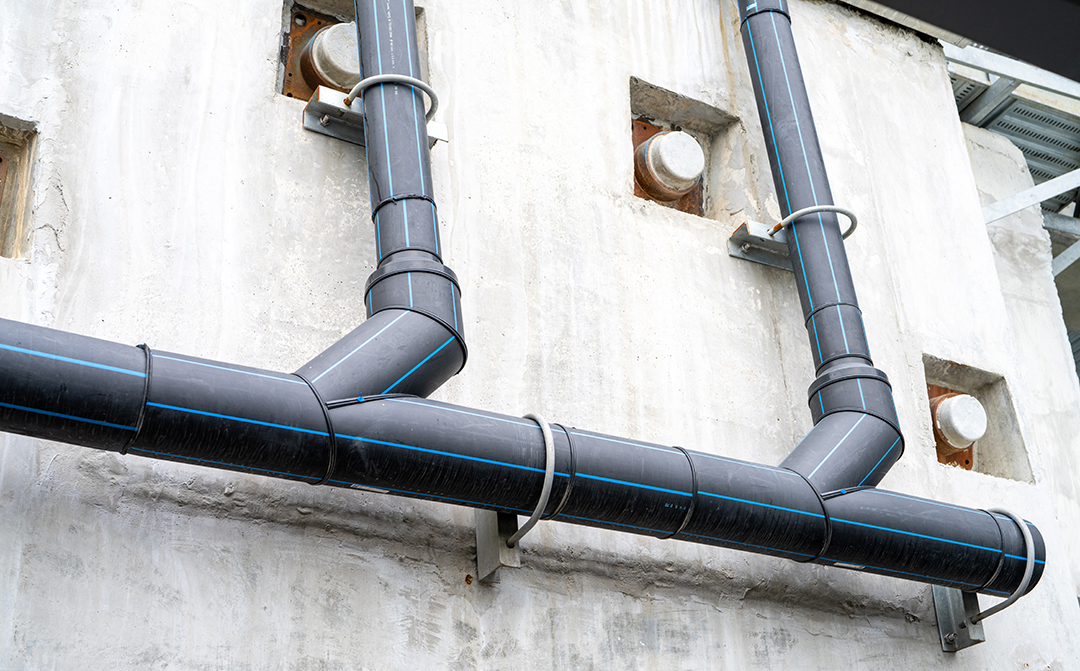High-density polyethylene (HDPE) tubing is transforming industrial and infrastructure projects with its environmental benefits. This durable polymer offers significant advantages, including reduced energy consumption in production, extended service life, and full recyclability. As industries prioritize sustainability, HDPE tubing stands out as a superior option for eco-conscious construction and piping systems. Its growing adoption across water management, industrial processes, and infrastructure development underscores HDPE’s role in creating more sustainable and efficient systems.
The Green Advantage of HDPE Tubing
HDPE tubing stands out as an environmentally responsible choice for several reasons:
- Low carbon footprint during manufacturing;
- Lightweight design for efficient transportation;
- Long service life reducing replacement frequency;
- Recyclability at the end of its lifecycle; and
- Resistance to corrosion and chemical leaching.
These factors contribute to HDPE tubing’s overall positive environmental impact, making it a preferred option for sustainable construction and infrastructure projects.
Using HDPE Tubing to Reduce Our Carbon Footprint and Mitigate Global Warming
One of the most significant environmental benefits of HDPE tubing is its low carbon footprint. The production process typically requires less energy compared to traditional materials like concrete or metal pipes. This efficiency translates to reduced greenhouse gas emissions throughout the product’s lifecycle.
To illustrate the environmental advantage of plastic piping, including HDPE, consider the following comparison based on the article’s findings:
- Plastic pipes (such as PVC, which has similar benefits to HDPE) have a lower climate change impact than reinforced concrete pipes and ductile iron pipes.
- The lower impact is primarily due to plastic pipes’ lighter weight, which allows them to achieve the same function with less material.
- Concrete and ductile iron pipes require more GHG-intensive transport and installation processes.
- While metal pipes (like ductile iron) have higher recycling rates at end-of-life compared to plastic pipes, this doesn’t offset their higher overall emissions.
It’s important to note that most pipes, regardless of material, are not typically recovered from the ground at the end of their life cycle. Instead, many are simply left in place. The overall lower emissions of plastic pipes stem from their reduced impact during production, transportation, and installation phases.
According to a peer-reviewed study published on the National Center for Biotechnology Information (NCBI) website, plastic pipes appear to have a lower overall environmental impact in terms of greenhouse gas emissions compared to concrete and metal alternatives for certain sewer and water applications. However, it’s important to consider multiple sources and specific project requirements when selecting piping materials for any given application.
Transportation Efficiency and Fuel Savings
The lightweight nature of HDPE tubing offers significant advantages in transportation. Compared to heavier materials like concrete, more HDPE tubing can be transported per truck load, resulting in fewer trips and reduced fuel consumption.
For example:
- A standard truck can carry up to 320 feet of corrugated HDPE pipe.
- The same truck can only transport 64 feet of reinforced concrete pipe.
This efficiency in transportation not only reduces fuel costs but also minimizes the overall carbon footprint associated with product delivery. Proper transportation considerations for HDPE pipes are crucial to maintain material integrity and ensure safe delivery to job sites.
Longevity and Durability
HDPE tubing boasts an impressive lifespan, often exceeding 100 years when properly installed and maintained. This longevity is attributed to its resistance to:
- Corrosion
- Chemical degradation
- UV radiation
- Abrasion
- Stress cracking
The extended service life of HDPE tubing translates to reduced need for replacements, minimizing the environmental impact associated with manufacturing and installing new pipes over time. These unique properties of HDPE pipe make it an excellent choice for a wide range of industrial and construction applications.
HDPE Pressure Rating: Performance Under Pressure
HDPE tubing’s pressure rating is a critical factor in its performance and sustainability. The pressure rating indicates the maximum internal pressure the tubing can withstand under normal operating conditions. HDPE pipe classifications include various pressure ratings to suit different applications:
- Low-pressure applications: 40-80 psi
- Medium-pressure applications: 80-160 psi
- High-pressure applications: 160-250 psi
The ability to withstand high pressures contributes to HDPE tubing’s durability and long service life, further enhancing its environmental benefits by reducing the need for frequent replacements. Understanding pipe sizes and pressure ratings is essential for selecting the right HDPE tubing for specific industrial applications.
Recyclability and Circular Economy
HDPE tubing’s recyclability is a significant factor in its environmental appeal. At the end of its service life, HDPE can be recycled and repurposed into new products, supporting a circular economy model. The recycling process for HDPE typically involves:
- Collection and sorting of used HDPE tubing;
- Cleaning and removal of contaminants;
- Shredding or grinding into smaller pieces; and
- Melting and reforming into new HDPE products.
This recyclability helps reduce waste and conserves raw materials, further minimizing the environmental impact of HDPE tubing throughout its lifecycle.
Recent research has demonstrated the practical applications of recycled HDPE in various industries. For instance, a study on circular economy approaches to HDPE recycling showcased the potential of repurposing HDPE into pet products. This innovative approach not only reduces inorganic solid waste but also creates new economic opportunities and provides consumers with sustainable product options. Such initiatives highlight the versatility of recycled HDPE and its potential to contribute to sustainable development, especially in developing economies.
HDPE Manufacturers: Driving Innovation in Sustainability
Leading HDPE manufacturers are at the forefront of developing sustainable piping solutions. These companies invest in research and development to improve the environmental performance of their products. Some key areas of focus include:
- Increasing the use of recycled content in HDPE tubing production.
- Developing bio-based HDPE materials from renewable sources.
- Improving manufacturing processes to reduce energy consumption and emissions.
- Enhancing the durability and longevity of HDPE tubing products.
By continually innovating, HDPE manufacturers are helping to drive the adoption of more sustainable piping solutions across various industries.
HDPE Price: Balancing Cost and Environmental Benefits
While the initial HDPE price may be higher than some traditional piping materials, it’s essential to consider the total cost of ownership and environmental impact over the product’s lifecycle. Factors that influence the overall value of HDPE tubing include:
- Lower installation costs due to lightweight design.
- Reduced maintenance requirements.
- Longer service life, minimizing replacement costs.
- Energy savings during production and transportation.
- Potential for recycling and reuse at end-of-life.
When factoring in these long-term benefits, HDPE tubing often proves to be a cost-effective and environmentally friendly choice for many applications.
Applications and Environmental Impact
HDPE tubing’s sustainability benefits extend across various applications, including:
- Water distribution systems;
- Stormwater management;
- Sewer systems;
- Industrial processes; and
- Agricultural irrigation.
In each of these applications, HDPE tubing contributes to reduced environmental impact through its durability, chemical resistance, and low-leakage properties. For example, in water distribution systems, HDPE tubing helps conserve water by minimizing leaks and maintaining water quality over long periods.
The versatility of HDPE tubing makes it an excellent choice for various industries. From optimizing downstream operations to enhancing midstream applications, HDPE tubing offers significant benefits. Its unique specifications for oil and gas applications make it particularly valuable in these sectors. The benefits of polyethylene pipes for water lines further demonstrate why HDPE is increasingly popular across diverse applications, ensuring optimal performance and environmental sustainability.
Sustainable HDPE Solutions from Coastal Resource Group
Coastal Resource Group offers sustainable HDPE tubing solutions for industrial and oilfield applications. Our products feature low carbon footprints, long service lives, and recyclability. We provide HDPE tubing with various pressure ratings to meet diverse project needs.
Our expert team helps you select the right HDPE tubing, considering environmental impact, cost-effectiveness, and sustainability. With fast delivery and comprehensive supply, we ensure your projects stay on track while minimizing environmental impact.
Contact Coastal Resource Group today to explore our sustainable HDPE tubing solutions and build a more environmentally responsible infrastructure.


